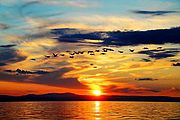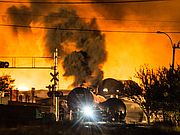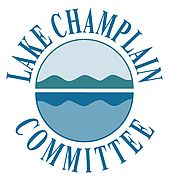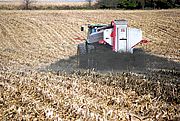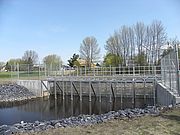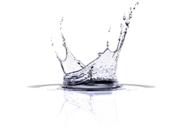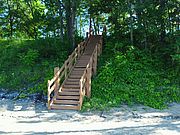Three years ago Lake Champlain reached record highs and Tropical Storm Irene ravaged the northeast. These and more recent flood events demonstrated the importance of buffers, floodplains, and stable riverbanks and shorelines in reducing sediment and pollution flows to the lake. Read...
News from Selected Category
Wish you could look at Lake Champlain every day? Now you can with a purchase of LCC's stunning photo cards feature beautiful vistas of our favorite lake! An eight-card set includes two cards each of four different arresting scenes and costs $10 for members, $14 if you haven't joined yet. Read...
This summer marked LCC's tenth year of blue-green algae monitoring and our third year of using a visual approach. We received reports from 87 sites around the lake each week during the summer. During the season LCC volunteers and staff had submitted over 1,165 observations to the blue-green algae tracker, nearly a 40% increase from the previous year. Read...
Over a hundred volunteers trained by LCC filed weekly water quality reports during the summer. Their data provided over 95% of the information on the blue-green algae tracking map housed at the Vermont Department of Health. “The Lake Champlain Committee makes an invaluable contribution to the Lake Champlain Blue-Green Algae Monitoring Partnership,” said Eric Smeltzer, Environmental Scientist with the Vermont Department of Environmental Conservation. Read...
Know someone who loves the lake? Have a good friend who you play on the water with? Express your caring for the wonderful people in your life and your concern for water quality at the same time by gifting a Lake Champlain Committee membership. Read...
Earlier this month lake effect snows dumped over seven FEET of snow around Buffalo, NY. Roads were closed for days; at least 30 roofs collapsed in Erie County; and at the latest toll 13 people had died as a result of the storm, many due to heart attacks caused by trying to move all the snow. Read...
Sea lamprey, best known for their parasitism on salmonids, are among the most primitive organisms with backbones. They belong to a relic group of jawless fish called Agnathans. Their basic body structure evolved much earlier than most other vertebrates. Read...
Are you on Facebook? So are we! 'Like' LCC's Facebook page for engaging content, the latest lake news, and beautiful lake photos. Read...
Rail transport of explosive Bakken crude oil through the North Country has increased dramatically due to tremendous growth in outputs from Canada and the Bakken oil fields of North Dakota. Rail incidents in Quebec, Alberta, Alabama, North Dakota, New Brunswick, and Virginia have led to fires and explosions. Read...
LCC is seeking an Office Manager who is highly organized, detail-oriented, energetic, enthusiastic, and multitasking. MORE Read...
Prevent Tar Sands from being transported through our communities! File comments by 9/30/2014 with both the New York Department of Environmental Conservation and the federal Department of Transportation. Read...
Check LCC's site weekly for water condition updates and reports of blue-green algae on Lake Champlain. Read...
More than 130 concerned residents attended an LCC public forum to discuss the risks of crude oil train traffic through the Adirondack Park and Champlain Valley last week, with many saying they would urge New York state officials to fully assess the risks to communities and the environment, and urge federal regulators to ban the older, leak-prone rail tanker cars involved in recent spills, fires and explosions. Read...
On August 25 four individual spiny waterfleas were found during routine monitoring of Lake Champlain. The invasive exotic zooplankton species were discovered in the middle portion of the Main Lake between Burlington and Port Kent. Read...
In early August, more than 400,000 residents in Toledo, Ohio were warned not to consume, cook with, or even boil their tap water due to the presence of algae toxins in their source water, Lake Erie. Read...
Should farmers who own land with greater potential to pollute Lake Champlain be held to a higher standard than those that own less vulnerable land? LCC agrees with a Conservation Law Foundation petition submitted to the Vermont Agency of Agriculture saying they should. Read...
Governor Peter Shumlin sent a revised Phase I plan for the clean-up of Lake Champlain to EPA the end of May. The plan is an effort to meet requirements anticipated from a revised lake pollution budget required by EPA. Read...
Bass are now the most popular recreational sport fish in America, and Lake Champlain has become a destination for bass fishing. In 2012, BassMaster Magazine listed Lake Champlain as the fifth best bass lake in the United States. Read...
Earlier this year, an innovative sea lamprey barrier was put in place on Morpion Stream, a tributary of the Pike River in Notre-Dame-de-Stanbidge. The barrier addresses one of the largest uncontrolled populations of sea lamprey on Lake Champlain by preventing adult lamprey from migrating to spawning habitat. Read...
The United States Department of Energy has released a Final Environmental Impact Statement (FEIS) for a electric transmission line that would run down the bottom of Lake Champlain and the Hudson River to deliver Canadian hydro-electricity to the New York City area. Read...
There are still more warm, drying days ahead before cold fall breezes blow in. Below are a few lawn and garden tips before you put tools away for the season. Read...
While most people are savoring the last few days of summer, many birds have gotten beyond that and are beginning their travels to warmer winter climes. One of the first migrating birds you might encounter on Lake Champlain is the Bonaparte's gull. Read...
Blue-green algae blooms have begun developing on Lake Champlain, particularly in the shallow northeastern bays – Missisquoi and St. Albans. Blue-green algae thrive in nutrient-rich water and can multiply rapidly to form blooms and scums. Read...
The sound of trains clacking along the rails that abut Lake Champlain has become more common recently with the dramatic increase in freight traffic attributed to fossil fuel extraction. Read...
In the midst of another spring of high water we remember the floods of 2011 that brought widespread devastation to the Champlain Basin. A large snow pack and extensive spring rains swelled Lake Champlain to a record height of 103.27 feet above sea level. Read...
Vermont has been working on revising a lake clean-up budget as directed by the Environmental Protection Agency. What are the chances that the budget will lead to a cleaner lake? Read...
In the 2014 Vermont Legislative session the legislature debated bills to increase requirements for protecting lake shores, regulate toxic chemicals and provide more funding for water quality projects. Read...
In late March, LCC joined with a number of other organizations interested in lakes and rivers to discuss ways to advance water quality policy in Vermont. Read...
The 2014 Lake Champlain Paddlers' Trail Guidebook will be out soon. This year's edition is filled with important information for great adventures on the water. MORE Read...
How much information can you convey in five minutes? That was the challenge presented at the Slam session of the recent meeting of the New England Association of Environmental Biologists. Read...


